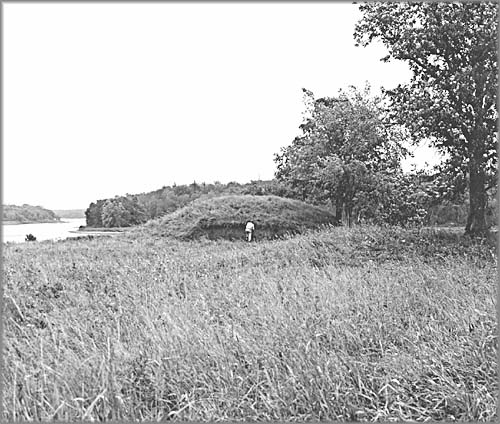3. “Since time immemorial.”

Indigenous people often use this phrase to describe the temporal depth of their connections with ancestral lands. It sounds at one and the same time both grand and uncertain: it could mean thousands of years or as little as a few generations. The Heiltsuk, a seagoing people who make their home on British Columbia’s central coast, have always maintained that they occupied the same place since beyond memory. Recent archaeological work on Triquet Island produced evidence that aligns with these claims, revealing occupation and land use dated back about fourteen thousand years.[1] That is to say, in a geologically volatile area where some of the most likely sites of occupation long ago sank into the sea, we can be confident that ancestors of the Heiltsuk were well established around 14,000 BPE.[2] This is one of the oldest sites of human occupation in the Americas. It throws a wrench into the dominant theories of human migration into the Americas. It raises the very real possibility that the Americas were settled long before scholars down to the twentieth century were prepared to believe—and long before humans reoccupied northern Europe after ice sheets receded.
Anyone who is even slightly informed on this topic knows that Indigenous peoples are not recent arrivals in the Americas. Still, it happens from time to time that someone will say something to minimize that unimaginably lengthy connection to these lands. In the summer of 2017, then-Governor General David Johnston asserted that all Canadians are immigrants, including Indigenous peoples — even though he allowed that the initial waves of “immigrants” arrived fourteen–fifteen thousand years ago.[3] By this definition, virtually every human society everywhere is an “immigrant” society, rendering Johnston’s point doubly ridiculous. Sadly, Indigenous claims to belonging to this place—the whole of the Americas—have been systematically and repeatedly disparaged and treated with disbelief. In the history of land claims in the courts, it is common to find a refusal on the part of colonial society’s lawyers and judges to accept the possibility of long-term occupancy. Worse, for hundreds of years the onus has been put on Indigenous communities to prove their tenure rather than on the settler society to disprove Indigenous assertions of belonging.
As historical matters go, this is telling. It reveals something of the extent to which Indigenous histories remain eclipsed by the story of European imperialism, the growth of a trans-Atlantic economy, colonization, and the narrative of the nation-state. It is reinforced by the Canadian tendency to think of the country and its people as “new” and even “without history.” The “Canada 150” celebrations in 2017 were seized upon by Indigenous people as a chance to challenge that dominant narrative: even if we were to celebrate four hundred years of European settlement along the St. Lawrence River, that’s not one-twentieth the tenure of the Stó:lō on the West Coast or the Dane-zaa in the Peace River Valley, to take only two examples. When people say that Canada is a “young” country, they overlook the evidence of thousands of years of Indigenous human occupation, activity, and stories, privileging the last five hundred years over the preceding ten thousand to fifteen thousand years.
How do we correct that imbalance? “History” has been deployed for generations as an instrument of royal, imperial, and nation-state legitimacy. It has been thus in Europe, Asia, Africa, and, indeed, even among Indigenous societies globally. It isn’t an accident that modern histories overlook competing claims to territory, resources, or sovereignty; until recently, that has been the principal point of historical writing. It was, if you like, the job description. To that end, historians in the academy have focused their attention on stories of colonization—that is, on post-1500 tales of encounters with and, ultimately, conquest of the peoples and places of the “New World.” This creates and perpetuates the sense that there is a rupture in the histories of Indigenous peoples that begins roughly five centuries ago, and that the stuff that really matters happens thereafter. Without doubt, the kinds of documents on which academic historians of North America principally depend arise in this post-contact era; the pre-contact past is not, however, unknowable, and traditional Indigenous keepers of historic knowledge are certainly proof of this. At the very least, we can paint the picture in broad brushstrokes and look for patterns of continuity and even for fracture lines that pre-date the contact era.
- Randy Shore, “Heiltsuk First Nation Village Among Oldest in North America: Archeologists,” Vancouver Sun (Vancouver, BC), March 28, 2017, http://vancouversun.com/news/local-news/heiltsuk-first-nation-village-among-oldest-in-north-america-archeologists ↵
- BPE—or Before the Present Era—is the dating system most often used in archaeological contexts. It refers to carbon dating that uses 1 January 1950 as the base year. 14,000 BPE might be represented as 12,000 BC (“Before Christ”) or 12,000 BCE (“Before the Common Era”), which is essentially the same thing. In the interest of consistency, we will use BPE in this course as often as possible when looking at events occurring more than four thousand years ago (that is, circa 2000 BPE or older). More recent than that, we will use the Gregorian system for the last four thousand years, which is divided in two. That is, the two thousand years BCE (Before the Common Era) and the last two thousand years or so, described as CE (Common Era). ↵
- David Johnston, “Governor General Apologizes for Indigenous ‘Immigrants’ Comment,” CBC News: The National, June 19, 2017, video, 2:15, https://youtu.be/HLIMlp4fFhs ↵

